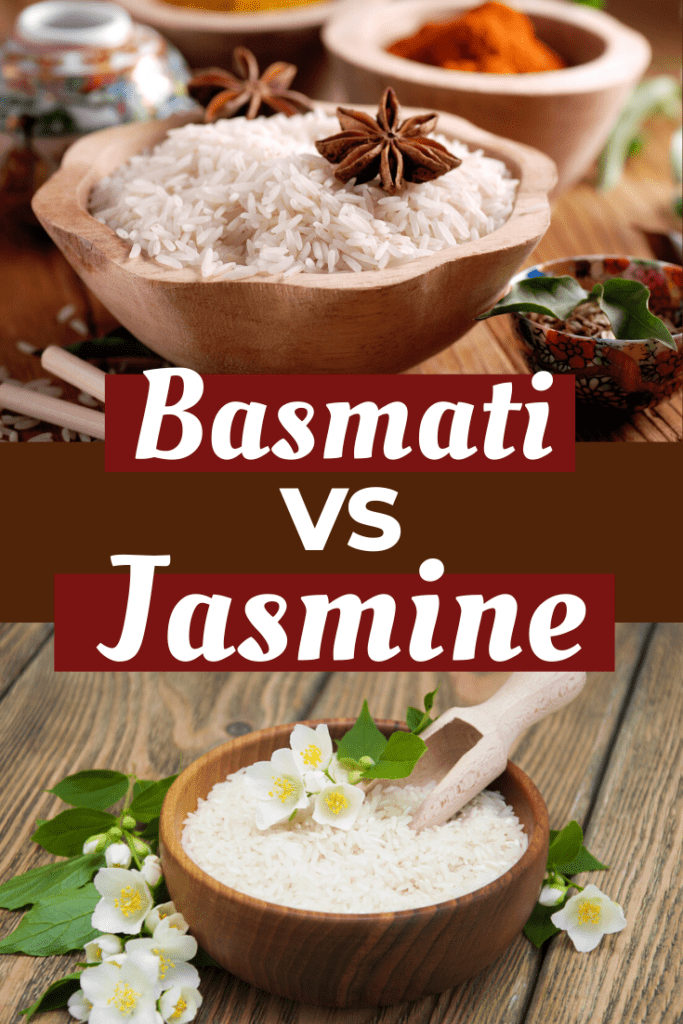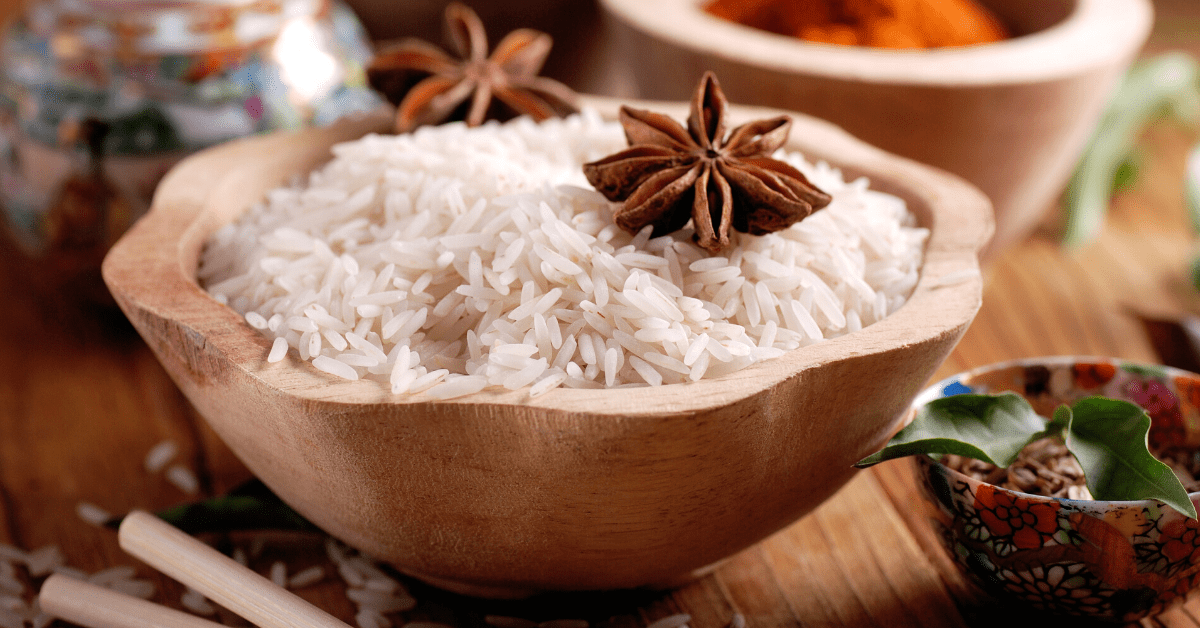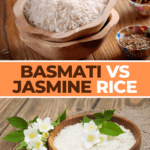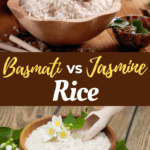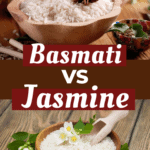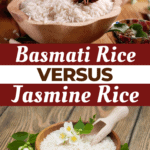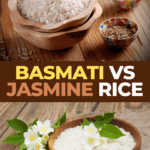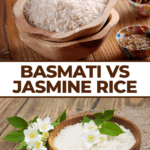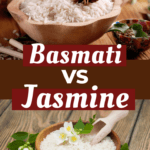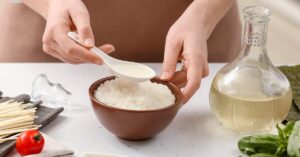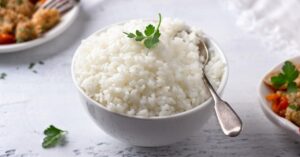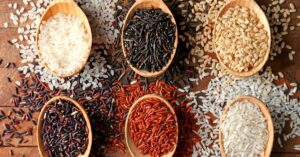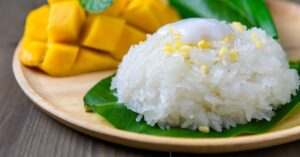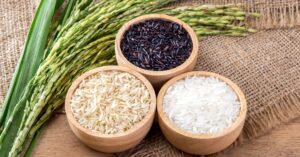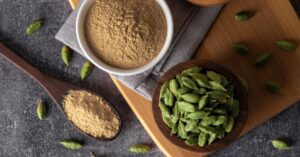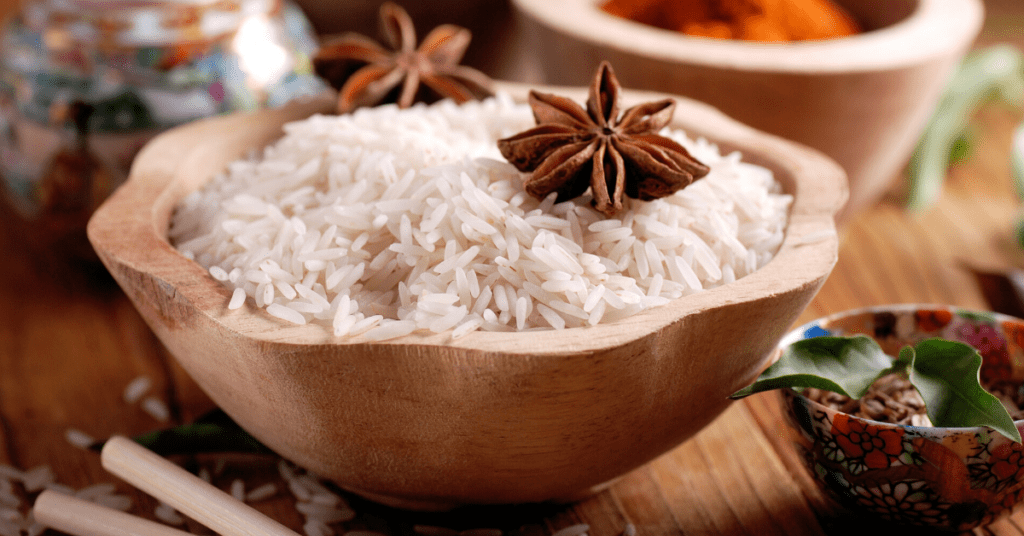
Jasmine and Basmati look and taste quite similar. But there are some key differences. This guide will teach you how to spot the difference and which one to choose.
Walk into any grocery store and you’ll find dozens of different varieties of rice. All around the world, there are over 40,000 different kinds! That’s a lot of rice.
Today we’ll be talking about two of the most popular aromatic, long-grain types of rice you can get: Basmati rice and Jasmine rice.
They are both very popular Asian varieties and many people often confuse the two. It’s not too surprising as they look quite similar. But you’ll quickly spot the difference when you know what to look for.
If you want to know their key differences, what each of them is best used for, how to tell them apart, and the recommended way to prepare them, keep on reading!
Origin
Jasmine Rice
Locally known as Khao Hom Mali, Jasmine rice originated in Thailand and is commonly used in many Southeast Asian recipes including spicy veggie curry or chicken curry and sometimes it’s even used to make sushi!
It was first grown for the royals of Thailand, then known as the Kingdom of Siam so it definitely had a reputation of being a more premium variety of rice.
Other varieties of Jasmine rice are also cultivated in neighboring countries like Vietnam, Cambodia, and Laos.
Basmati Rice
Basmati rice, on the other hand, was first cultivated many centuries ago just below the great Himalayas in India and Pakistan. Later on, this long-grain rice was exported and introduced to the Middle East.
It is now used not just for Indian cuisine but many Middle Eastern dishes as well. Basmati is also grown in some parts of the US, but imported varieties are usually better in quality.
How to Tell the Difference Between Jasmine and Basmati Rice
Appearance
Both are long-grain rice so at first glance, these two varieties will look very similar when uncooked. However, Jasmine rice grains have rounded tips and are usually more translucent.
Meanwhile, Basmati rice has longer, thinner grains with sharper ends.
Both Jasmine and Basmati rice come in two colors: white and brown. White variants of rice are polished and are free from bran. The brown version is unpolished and will contain less carbohydrates. Brown rice tends to have a slightly nuttier, earthier flavor.
Texture
It is much easier to tell the difference between Jasmine and Basmati when they have already been cooked. Basmati grains will remain much longer, almost doubling in size once cooked and will be firm, dry, and easier to separate.
Jasmine rice will have more moisture and grains will clump together, losing their structure when cooked, much like sushi rice. Simply put, Basmati will be fluffy and Jasmine rice will be moist.
Aroma
You’ll also notice a distinct difference in the scent of Jasmine and Basmati rice. As the name suggests, Jasmine rice has an aromatic, floral scent with a slight sweetness.
In comparison, Basmati, which literally means “full of fragrance”, has a nuttier scent.
How to Cook Jasmine and Basmati Rice
Like any rice, both Jasmine and Basmati are very simple to cook. Here’s the best way to cook each of these varieties.
To cook Jasmine rice, you will first need to wash it to make sure there is no dust or excess starch. Afterwards, be sure to drain all the water.
With the ideal rice to water ratio, you’ll be able to make aromatic, perfectly cooked Jasmine rice. For each cup of rice, I add in 1 and ½ cups of water for that perfect sticky texture. Cooking time will be about 20 minutes or until all of the water is absorbed.
With Basmati rice, the process is a bit different. Instead of washing, the rice is first soaked in water for at least 45 minutes to 1 hour before cooking. This will allow the grains to absorb some of the moisture and ensure even cooking.
You then boil it and use 3 cups of water for every 2 cups of Basmati rice.
For added flavor and depending on how you’ll be serving it, you can also add extra spices to either Jasmine or Basmati rice. I would recommend turmeric for Jasmine rice and saffron for the Basmati!
You can also cook both varieties in a rice cooker. The process will be the same: Wash the Jasmine rice and cook with the same rice to water ratio.
With Basmati rice, you will still need to soak them but you will be using slightly less water than what your rice cooker instructions recommend.
Which One is Healthier? Jasmine VS Basmati
You might be choosing between Jasmine or Basmati rice based on nutritional value. If you’re wondering which rice variant is healthier, we’ve got you covered!
Both Jasmine and Basmati rice, like most varieties of rice, are complex carbohydrates. They are an excellent energy source that is easily digested and contain zero cholesterol.
In terms of caloric content, a cup of Jasmine has 238 calories and a cup of Basmati rice has 191 calories.
As for their glycemic index (or how easily they are metabolized and digested) Basmati rice has half the GI of Jasmine rice. This lower GI will also keep insulin and blood sugar levels at bay.
Overall, if you’re trying to watch your weight, want to stay full for longer, and cut back on the extra calories, Basmati rice will be the better option for you.
The brown, unpolished version of both these rice variants also contains less carbohydrates and more fiber. It also has higher iron content. Generally, the brown, unpolished rice is a healthier option for either Jasmine or Basmati rice.
